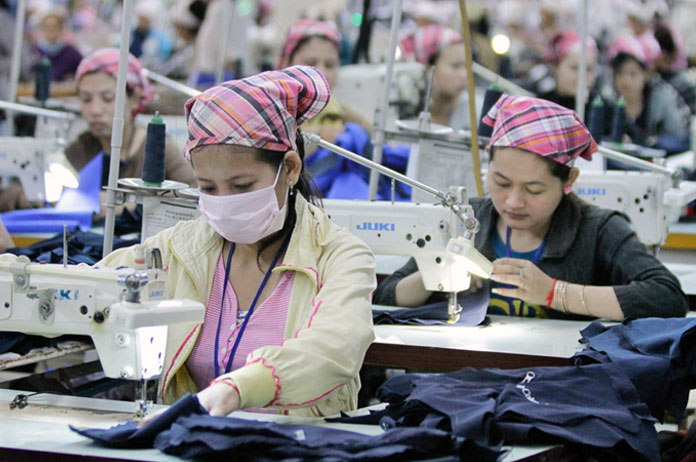Garment Industry Exports Up, Jobs Down

Exports grew at a solid pace in 2016, rising by 7.2 percent to $7.3 billion, but the number of registered exporting factories fell by 10.4 per cent, while the number of workers declined by 2.9 per cent, compared to 2015.
The figures were published in the sixth edition of the International Labour Organisation’s Cambodian garment and footwear sector bulletin. According to the report, there were three main factors behind the discrepancy between strong exports on the one hand, but weaker employment on the other. These factors include a rise in the industry’s productivity, statistical problems with the measurement of employment and factory numbers, and an increase in production in subcontracting factories.
ILO country director Maurizio Bussi said: “A rise in employment and production in subcontracting factories could be a concerning development if subcontracting is being used as a way to undercut regulations, including labour law and the minimum wage”. Unlike registered exporting factories, subcontractors are not monitored by the Better Factories Cambodia programme. “The situation should be carefully monitored by stakeholders and relevant agencies of the Royal Government of Cambodia,” added Bussi.
The report said garments and footwear are still the country’s most important exports, accounting for 78 percent of total merchandise exports in 2016. “The EU remains the most important market destination for Cambodia’s garment and footwear exports, with the US second,” it said. “The sector’s exports to the EU and US combined accounted for only 65 percent in 2016, down from 72 percent in 2015, with an increasing share going to markets outside the US and EU, notably Japan and Canada.”
The report highlighted improvements in the income of workers, despite the overall drop in staff numbers. “The average monthly earnings [including overtime] of Cambodia’s garment and footwear workers increased from $145 in 2014 to $175 in 2015 and to $195 in 2016. Adjusted for inflation, real average monthly wages/earnings were 8 percent higher in 2016 than they were in 2015,” it said.
The World Bank in its latest economic outlook on Cambodia said while the country’s economic growth remain strong, growth in garment exports eased, expanding at 8.4 percent (in value terms) year-on-year in 2016, compared with 12.3 percent in 2015. “Rising labour costs, driven in part by the increasing cost of living, US dollar appreciation, and competition from other regional low-wage countries, in particular Myanmar, continue to exert downward pressure on prices of exported garment products,” the World Bank said.